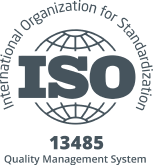Brushless Permanent Magnet Motors to Drive Electric Buses
An Innovative Solution for Sustainable Transportation
Introduction
The global shift towards sustainable and eco-friendly transportation has placed significant emphasis on electric vehicles (EVs), including electric buses. Among the various technologies employed in EVs, Brushless Permanent Magnet Motors (BPMMs) have emerged as a promising solution for driving electric buses due to their efficiency, durability, and performance.
Understanding Brushless Permanent Magnet Motors
Brushless Permanent Magnet Motors are a type of electric motor that utilizes permanent magnets to generate a magnetic field. Unlike traditional brushed motors, BPMMs do not have brushes, which reduces maintenance and improves efficiency. The absence of brushes also eliminates the risk of sparks and wear, making BPMMs more reliable and longer-lasting.
Key Components and Functionality
BPMMs comprise several key components, including:
- Stator: The stationary part of the motor, which houses the windings and creates a rotating magnetic field.
- Rotor: The rotating part that contains the permanent magnets and rotates in response to the magnetic field generated by the stator.
- Electronic Controller: Manages the flow of electricity to the windings, ensuring precise control of the motor’s speed and torque.
The interaction between the stator’s magnetic field and the rotor’s permanent magnets results in smooth and efficient motion, which is crucial for the operation of electric buses.
Advantages of BPMMs in Electric Buses
Brushless Permanent Magnet Motors offer several advantages over other motor types, making them ideal for use in electric buses:
High Efficiency
BPMMs are known for their high efficiency, which translates to lower energy consumption and longer driving ranges for electric buses. The efficiency of BPMMs can exceed 90%, enabling buses to cover more distance on a single charge.
Low Maintenance
The absence of brushes means that BPMMs require minimal maintenance compared to brushed motors. This reduces downtime and maintenance costs, making electric buses more economical to operate over their lifecycle.
Enhanced Performance
BPMMs provide superior torque and power density, which are essential for the performance of electric buses. They offer smooth acceleration and the ability to handle varying loads, ensuring a comfortable and reliable ride for passengers.
Durability and Reliability
BPMMs are built to withstand harsh operating conditions, including frequent start-stop cycles and high temperatures. Their robust design contributes to the overall reliability and longevity of electric buses, reducing the need for frequent replacements and repairs.
Applications in Electric Buses
Brushless Permanent Magnet Motors are used in various applications within electric buses, including:
Traction Motors
BPMMs serve as traction motors, providing the primary propulsion for electric buses. Their high torque and efficient operation make them suitable for driving the wheels and ensuring smooth acceleration and deceleration.
Auxiliary Motors
In addition to traction motors, BPMMs are used in auxiliary systems such as air conditioning, power steering, and regenerative braking. These applications benefit from the efficiency and reliability of BPMMs, contributing to the overall performance of electric buses.
Technological Advancements and Future Prospects
The ongoing advancements in BPMM technology continue to enhance their performance and applicability in electric buses. Researchers and engineers are exploring new materials, designs, and control strategies to further improve the efficiency, power density, and cost-effectiveness of BPMMs.
Integration with Battery Systems
Future developments focus on optimizing the integration of BPMMs with battery systems to maximize energy efficiency and driving range. Advanced battery management systems and intelligent controllers are being developed to ensure seamless coordination between the motors and batteries.
Smart and Connected Solutions
The incorporation of smart and connected technologies into BPMMs and electric buses is another area of growth. These innovations enable real-time monitoring, predictive maintenance, and enhanced fleet management, improving the operational efficiency and reducing the total cost of ownership.
Conclusion
Brushless Permanent Magnet Motors represent a critical technology in the evolution of electric buses. Their efficiency, low maintenance, enhanced performance, and durability make them an ideal choice for sustainable transportation solutions. As technological advancements continue to push the boundaries of BPMM capabilities, electric buses driven by these motors will play a pivotal role in shaping the future of urban mobility and reducing the environmental impact of transportation.
Electric buses equipped with BPMMs offer a promising path towards cleaner air, reduced greenhouse gas emissions, and a greener planet. The combination of innovative motor technology and smart infrastructure solutions will ensure that electric buses remain at the forefront of sustainable transportation for years to come.








